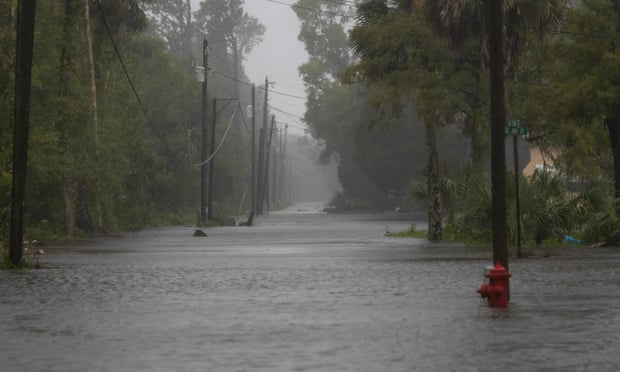Analysis brought to you by the experts at FC&S Online, the unquestioned authority on insurance coverage interpretation and analysis for the P&C industry. To find out more — or to have YOUR coverage question answered — visit the National Underwriter website, or contact the editors via Twitter: @FCSbulletins.
Question: The question I have is regarding a loss which occurred in Illinois, and I'm looking at the ISO HO-3 10/00 for coverage. The named insured's live-in girlfriend fell off the deck due to poorly-maintained railing. She died as a result of her injuries. The insured is looking to his homeowner's policy to respond to the subsequent lawsuit initiated by her family. I say there is coverage because she is not considered an 'insured' by definition, and Section II exclusion F.6. does not apply. My co-worker says the policy will not respond because she was a resident of the household.
— Illinois Subscriber
Answer: You are correct that she is not an insured by definition. She is not related to the insured by blood, and was not in the care of the insured or another resident relative. The definition does not change under Section II other than for persons having custody of the insured's animals or watercraft, neither of which is the case here.
Medical payments provides coverage for people on the “insured location” with permission of “the insured,” which fits this situation.
However, under G. Coverage F Medical Payments to Others: 4. coverage does not apply to any person “regularly residing on any part of the 'insured location.'” So there is no coverage under medical payments.
Remember that Coverages E and F are separate coverages; Coverage E pays for injury caused by an occurrence to which the coverage applies. Under the personal liability coverages and exclusions, the exclusion for injury to “insured” does not apply as she was not an “insured” by definition.
There is coverage under personal liability, but no coverage under medical payments. There is a duty to defend coverage under section E for Personal Liability.
Related: Your questions answered: Replacement cost vs. cash value
|Coverage for vehicle left 'in the care of' owner's father
Question: In the Texas auto policy at issue, “family member” means a person related to you by blood, marriage, or adoption who is a resident of your household and who is listed as an authorized driver in the application. This includes a ward or foster child.
Under the liability exclusions, the policy does not provide liability coverage for any “insured” 2- for “property damage” to property owned or being transported by that “insured.” 3. For “property damage” to property a-Rented to b- Used by; or c- In the care of; that “insured.”
Our named insured is Larry. His vehicle slipped gear and rolled into his son Brad's vehicle at Larry's home. Brad is a part-time resident at Larry's household but is not listed on the application for insurance for Larry. Brad works on pipelines and is gone for varied amounts of time, but his permanent address is and has always been that of Larry. Larry and his wife keep Brad's vehicle in their garage while he is away, and they are both listed as drivers on his dec page. Also, they drive the vehicle occasionally to keep things running smoothly, and there are two sets of keys left at their home even when Brad is out of town. The parents also perform routine maintenance on the vehicle if needed while Brad is out of town. However, if Brad is in town he takes care of the vehicle.
Should Larry's policy cover damage for Brad's vehicle under part A liability?
— Michigan Subscriber
Answer: Whether Larry's policy should cover damage for Brad's vehicle boils down to if it was “in the care of” his parents at the time of the accident. Although what is considered “in the care of” may vary by jurisdiction, based on the facts provided it is our opinion that Brad's vehicle was undeniably “in the care of” his parents at the time of the accident and, thus, precisely one type of scenario meant to be excluded under part A liability.
Related: Expenses incurred to minimize loss should be covered
|Additional insured is non-resident relative
Question: The insured's father cosigned the mortgage and was placed on the policy as an additional insured per form HO 04 41. He did not reside with the insured. The insured's father was helping the insured remodel a porch deck when he fell and was injured. HO 04 41 makes the father an additional insured, and the med pay exclusion precludes coverage for an insured. However, since the father did not reside with the insured, does med pay coverage apply?
— Ohio Subscriber
Answer: The fact that the father did not live with the insured does not negate the endorsement making him an insured. The definition of “insured” is extended to the scheduled individual for coverages A, B, E, and F, meaning that the father cannot both be an additional insured and an other person who receives benefits. As he is an insured for coverage F, that would be providing benefits to himself. There is no coverage for the father.

Here's what happens when an adult child moves back into a parent's home, then causes property damage. (Photo: iStock)
|Relative must be resident in order to covered
Question: Due to recent financial hardship, the named insured's 32-two-year-old adult son had been staying in the insured location for two months prior to the covered loss. The insurance carrier has recently denied coverage for loss of use and for the personal property owned by the son.
The following circumstances apply:
- |
- |
- |
- Our named insured is the owner of the building on record, the insurance is in her name, and the home is the named insured's primary residence.
- The named insured was temporarily living in a rental home and was remodeling her primary residence.
- The insured's contents remained in the home including all the furniture as well as personal articles and clothing.
- While staying in the rental home, she maintained electricity, water, and gas at the insured location. All bills for utilities remained in the name of the named insured.
- The intention of the insured was to move back into the home once the remodeling was complete.
- |
- |
The insurance carrier states that “the son would not be considered an insured as the residence premise is not occupied by the insured and the insured is living at the rental location.” Our position is that the thirty-two-year-old son is an insured by definition of “insured” as offered in the policy. Therefore we believe his personal property would be covered as well as additional living expenses.
— Pennsylvania Subscriber
Question: The problem is that in the definition of “insured,” the resident must be part of the insured's household. Merriam-Webster defines “household” as those living under the same roof or living together in the same dwelling. In your situation, they were not living together since the named insured was at a separate property. Had they both be in the house then the son's property and loss of use would be covered, but since the insured was not living on premises, the son technically does not meet the definition of “insured.”
Related: Here's why fighting crime causes uninsured property damage
|Son and dog are tenants, not resident relatives
Question: The insured owns a rental home that is insured on a Dwelling Fire policy. The liability for the rented home is endorsed to the Dwelling Fire policy. The tenant of the rented home is the insured's adult son. The adult son owns a dog that bit another individual. How do you see liability coverage, if any, applying in this situation? The Dwelling Fire liability policy has the following wording:
Definitions: “Insured” means you and residents of your household who are a. Your relatives; b. Other persons under the age of 21 and in the care of any person named above c. with respect to animals or watercraft to which this policy applies, any person or organization legally responsible for these animals or watercraft which are owned by you or any person included above. A person or organization using or having custody of these animals or watercraft in the course of any “business” or without consent of the owner is not an “insured.”
— Ohio Subscriber
Answer: Unless the insured is living in the dwelling with the son, the son is not considered an insured. He is a tenant like anyone else. Therefore, the son would need to have his own liability policy in order to have coverage for the dog bite. The liability is for the insured, the father, not his tenants. Being a relative does not automatically make one an insured, especially when they live in separate residences. This is something most insureds do not understand. Unless the father is somehow found legally liable, there is no coverage.
Related: Coverage question concerning 'non-owned auto' use
|Named insured does not occupy residence
Question: Our agent placed a homeowners policy with our company. The named insured has never occupied the residence, and the tenant pays her a monthly rent. We now have a substantial fire loss. Do we owe our insured the monthly rent she has lost?
— Idaho Subscriber
Answer: The ISO homeowners policy HO 00 03 10 00 states that coverage is available if that part of the “residence premises” rented to others or held for rental is not fit to live in. “Residence premises” is defined as the “one [or two, three, or four] family dwelling where you reside [in at least one of the units], or that part of any other building where you reside.”
The definition is not met, so, no coverage for loss of rents.
|Owners, named insureds, and additional insureds
Question: We have a policy where four siblings own a home. The mother lives in the house but deeded the property over to all the kids. One adult child resides with the mother. The question is who should be listed as the named insured on the homeowners policy?
The agent wants everyone listed as named insureds, but we believe that the owner living in the home is the named insured, with the other siblings being additional insureds. Please share your thoughts.
— Connecticut Subscriber
Answer: Most likely, the agent thinks all the children should be listed as named insureds because they are all on the deed as owners of the property. However, the homeowner policy defines insured as “you and residents of your household.” The siblings are not residents of the household even though they do have an interest in the property.
The HO 04 41, additional insured endorsement, provides the siblings with the necessary coverage as part owners of the property, even though they are non-residents. The sibling living in the house is the named insured; the brothers and sisters are additional insureds.
See also:
Want to continue reading?
Become a Free PropertyCasualty360 Digital Reader
Your access to unlimited PropertyCasualty360 content isn’t changing.
Once you are an ALM digital member, you’ll receive:
- Breaking insurance news and analysis, on-site and via our newsletters and custom alerts
- Weekly Insurance Speak podcast featuring exclusive interviews with industry leaders
- Educational webcasts, white papers, and ebooks from industry thought leaders
- Critical converage of the employee benefits and financial advisory markets on our other ALM sites, BenefitsPRO and ThinkAdvisor
Already have an account? Sign In Now
© 2024 ALM Global, LLC, All Rights Reserved. Request academic re-use from www.copyright.com. All other uses, submit a request to [email protected]. For more information visit Asset & Logo Licensing.








